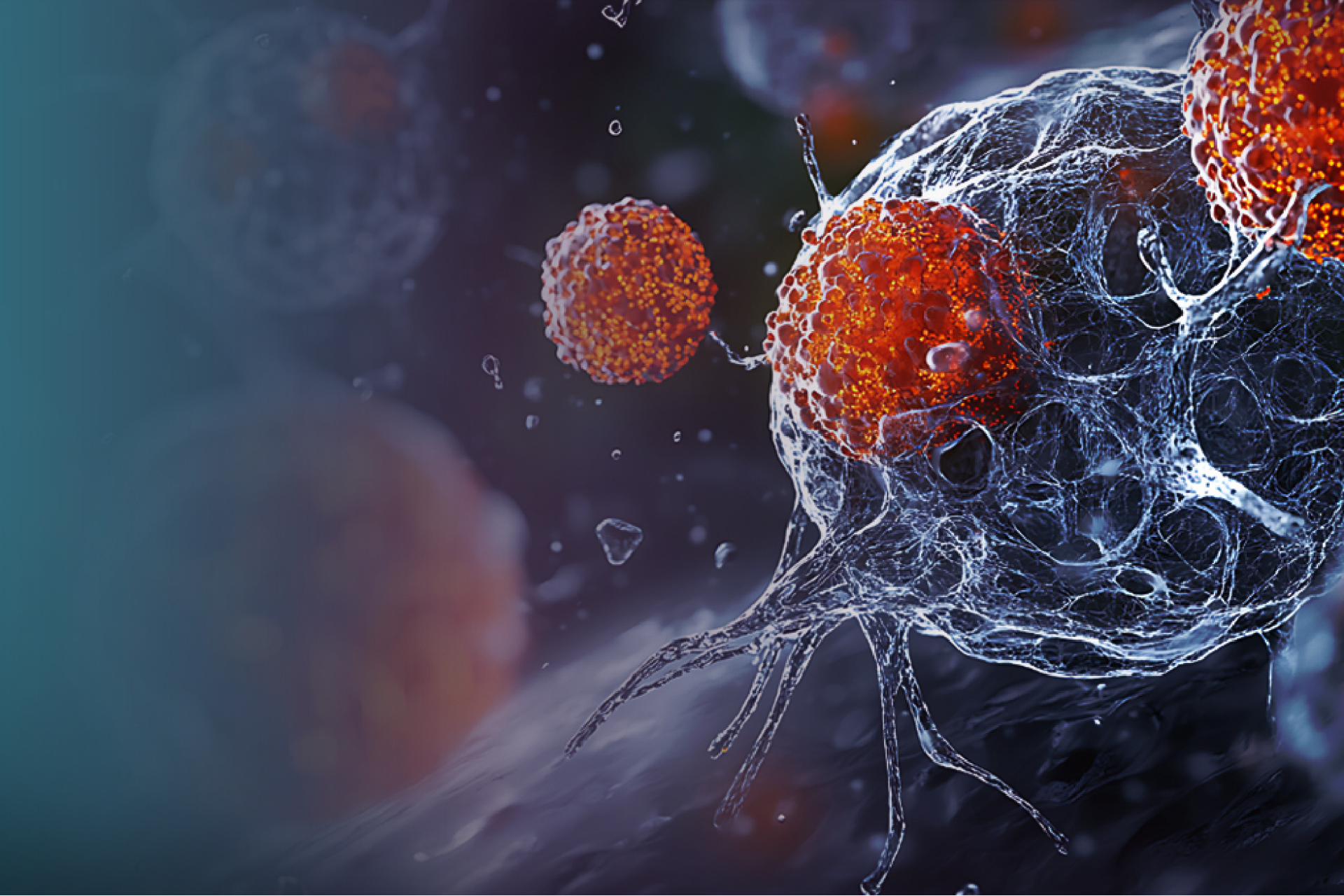Cancer research is rapidly evolving, and one of the newer targets is a molecule called Carcinoembryonic Antigen-Related Cell Adhesion Molecule 6 (CEACAM6). Scientists have discovered that this protein plays an important role in how some cancers grow, spread, and escape the body’s immune system. Understanding CEACAM6 is helping researchers explore new ways to select patients for targeted treatments and improve outcomes.
What is CEACAM6?
CEACAM6 is a protein found on the surface of cells. In healthy tissues, its levels are usually low. But in many cancers, CEACAM6 levels rise sharply[1]. This increase is linked to faster tumor growth, a greater ability to spread, and resistance to some treatments.
How is CEACAM6 Measured?
There are several ways to measure CEACAM6 levels:
Tissue Testing (IHC)
A small sample of the tumor is tested in the lab using special antibodies to identify how much CEACAM6 is present[2].
Blood Tests (ELISA)
CEACAM6 can also be measured in blood. Higher blood levels have been linked to shorter survival in pancreatic cancer patients[3].
Molecular Tests
Tests like PCR and can measure CEACAM6 at the gene and protein levels, offering precise insights[2].
These tests help identify patients whose cancers rely heavily on CEACAM6, making them potential candidates for novel therapies.
Why CEACAM6 Matters in Cancer
CEACAM6 plays several roles that make cancer harder to treat:
1. It helps cancer cells grow faster by turning on growth pathways inside the cell.
2. It allows cells to detach and survive in the bloodstream, which helps them spread to other parts of the body.
3. It encourages tumor cells to invade surrounding tissues and form new blood vessels, supporting tumor growth.
4. It helps cancer cells hide from the immune system by blocking T cells, which are the body’s immune soldiers.
Unlike some other immune escape mechanisms, CEACAM6 works independently of PD-1 and PD-L1 pathways. This means it could be a useful target in patients whose cancers do not respond to current immunotherapies.
Cancers Where CEACAM6 Is High
Higher levels of CEACAM6 are found in several cancers:
Pancreatic Cancer
More than 90 percent of pancreatic adenocarcinomas show CEACAM6 overexpression, even in early stages.
Lung Cancer
About 80 percent of lung adenocarcinomas have high CEACAM6 levels, especially in patients with EGFR mutations. This is linked to treatment resistance.
Colorectal Cancer
CEACAM6 rises as the disease progresses and is often found at high levels in liver metastases.
Gastric Cancer
Over half of gastric cancer cases have high CEACAM6 levels, which are linked to larger tumors and advanced disease stages.
Breast and Other Cancers
Around half of breast cancers show increased CEACAM6, especially hormone receptor positive types. It is also seen in cholangiocarcinoma, osteosarcoma, and oral cancers, often indicating worse outcomes.
Why Measuring CEACAM6 Helps
High CEACAM6 levels are linked to poorer survival, faster disease progression, and resistance to some treatments. For example, pancreatic cancer patients with lower CEACAM6 expression tend to live longer after surgery. Identifying these levels helps oncologists and investigators predict how aggressive the disease may be and who might benefit from new targeted therapies[2].
Who Might Benefit From CEACAM6-Targeted Therapies?
Patients with cancers that strongly express CEACAM6 may be ideal candidates for clinical trials or targeted drugs. This includes people with advanced pancreatic, lung, gastric, or colorectal cancers. It may be especially relevant for those who have not responded to existing immunotherapies or chemotherapy.
Current Treatment Approaches Targeting CEACAM6
Several strategies are being tested to block CEACAM6:
Antibody-Drug Conjugates (ADCs)
These are smart drugs that attach a powerful anti-cancer compound to an antibody that recognizes CEACAM6. One such drug, 84-EBET, has shown strong effects in early studies across several cancers[4].
Monoclonal Antibodies
Lab-made antibodies can block CEACAM6 from interacting with immune cells. One such antibody, 8F5, slowed tumor growth by 40% in lung cancer models, and even more when combined with chemotherapy[3].
Some earlier drugs were stopped due to side effects, but newer versions are being designed to be safer and more effective.
Looking Ahead
Researchers are now working to standardize CEACAM6 testing, so patients can be selected more accurately for targeted therapy. They are also exploring ways to combine CEACAM6-targeting drugs with other treatments, like immunotherapy or chemotherapy, to boost results.
The Bottom Line
CEACAM6 is emerging as an important marker and treatment target in several solid tumors. Testing for CEACAM6 can help identify patients with more aggressive disease and those who may benefit from future therapies. While many of these treatments are still in early stages, they offer new hope for patients whose cancers are difficult to treat with existing options.
References:
1. Chiang WF, Cheng TM, Chang CC, Pan SH, Changou CA, Chang TH, Lee KH, Wu SY, Chen YF, Chuang KH, Shieh DB, Chen YL, Tu CC, Tsui WL, Wu MH. Carcinoembryonic antigen-related cell adhesion molecule 6 (CEACAM6) promotes EGF receptor signaling of oral squamous cell carcinoma metastasis via the complex N-glycosylation. Oncogene. 2018 Jan 4;37(1):116-127. doi: 10.1038/onc.2017.303. Epub 2017 Sep 11. PMID: 28892050.
2. Kurlinkus B, Ger M, Kaupinis A, Jasiunas E, Valius M, Sileikis A. CEACAM6’s Role as a Chemoresistance and Prognostic Biomarker for Pancreatic Cancer: A Comparison of CEACAM6’s Diagnostic and Prognostic Capabilities with Those of CA19-9 and CEA. Life (Basel). 2021 Jun 9;11(6):542. doi: 10.3390/life11060542. PMID: 34207784; PMCID: PMC8226832.
3. Zhao D, Cai F, Liu X, Li T, Zhao E, Wang X, Zheng Z. CEACAM6 expression and function in tumor biology: a comprehensive review. Discov Oncol. 2024 May 25;15(1):186. doi: 10.1007/s12672-024-01053-6. PMID: 38796667; PMCID: PMC11127906.
4. Kogai H, Tsukamoto S, Koga M, Miyano M, Akagi T, Yamaguchi A, Mori K, Gotoh K, Nakazawa Y. Broad-Spectrum Efficacy of CEACAM6-Targeted Antibody-Drug Conjugate with BET Protein Degrader in Colorectal, Lung, and Breast Cancer Mouse Models. Mol Cancer Ther. 2025 Mar 4;24(3):392-405. doi: 10.1158/1535-7163.MCT-24-0444. PMID: 39812376; PMCID: PMC11876960.
